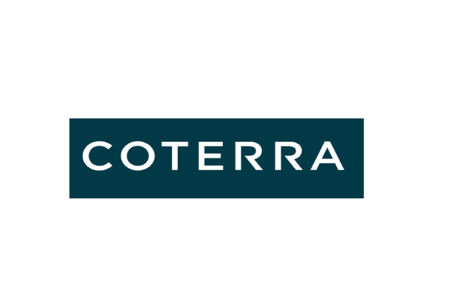Coterra Energy’s Charismatic 5 State project in Culberson County is a blueprint for how U.S. shale operators are optimizing drilling and facilities planning to accelerate production and improve returns. Using surface, subsurface, and workflow cadence insights from the project files, we can clearly see a tightly orchestrated Factory Development model—where permitting, drilling, and facility readiness are sequenced with near-manufacturing precision.
This coordinated design enables Coterra to reduce downtime, streamline pad development, and bring wells online faster in one of the most competitive shale regions in North America.
A Permitting-to-Production Cadence Built for Speed
The project cadence tells a compelling story: everything moves deliberately, efficiently, and as part of a larger development strategy.
1. Permit Cadence: A Two-Week Window, Ten Wells Aligned
The well licensing window for the project spanned only 16 days — from May 14 to May 30, 2025, with an average license date of May 24. This tight batching of permits signals a pre-planned multi-well pad development strategy rather than one-off drilling.
2. Drilling Cadence: A Six-Month Ramp to a High-Efficiency Spud Cycle
Drilling kicks off on November 10, 2025 — about 169 days after the average license date, a typical timeline for pad construction, roadwork, rig scheduling, and frac planning. Once drilling starts, the program accelerates rapidly:
- ~3-day cadence between spud dates
- Sequential drilling consistent with a single rig walking the pad
- Validated factory-style workflow
Coterra is clearly maximizing rig efficiency through pad-based horizontal development.
3. Facility Permit Cadence: Synchronized with Drilling
The facility air permit for the CHARISMATIC 5 STATE FACILITY was received on November 17, 2025, just 7 days after the first spud, and 177 days after the average license date.
This is a hallmark of high-performance shale development:
- Drilling begins
- Facility construction is already underway
- Air permits finalize just before completions and flowback
- Infrastructure is ready when wells transition to production
This tight alignment eliminates the costly lag between drilling, facility readiness, and flowback operations.
Surface Development Persona: A Multi-Well Pad at the Core
Surface data reinforces that the heart of this project sits on a high-activity multi-well pad in Block 60T2, Abstract 2821, Section 5, hosting six permits—a concentrated development zone that drives factory-style efficiency. Factory Cadence and Persona fo…
Other nearby single-well pads contribute incremental value, but the operational center of gravity is clearly the STATE CHARISMATIC 5-8 UNIT lease.
Surface Persona (from file):
Coterra’s development is anchored around a high-intensity multi-well pad in Block 60T2, supported by the STATE CHARISMATIC 5-8 UNIT lease. The surrounding single-well pads represent incremental expansion, while incomplete rig attribution suggests additional drilling not yet reflected in the surface metadata. Factory Cadence and Persona fo…
Subsurface Targeting Persona: Wolfcamp + Bone Spring Dual-Formation Strategy
The subsurface profile shows a stacked-pay development plan targeting some of the most productive zones in the Delaware Basin.
Formation Targets
- Wolfcamp (Primary) – 5 wells
- Bone Spring (Primary) – 4 wells
This dual-zone program leverages the vertical stacking characteristic of West Texas geology, enabling multiple high-quality benches on a single pad.
Well Types
- 6 Horizontal oil/gas wells
- 3 Injection wells — supporting disposal or pressure maintenance
Depth Profile
- Min: 4,500 ft
- Max: 11,000 ft
- Average: 8,833 ft
- Total footage: 79,500 ft drilled across all wells
Sub-Surface Persona (from file):
Coterra’s program pursues a dual-formation Wolfcamp/Bone Spring strategy using predominantly horizontal drilling across vertical depths of 4,500 to 11,000 feet. The majority producer mix and stacked-pay development reflect a high-intensity factory program designed for multi-zone recovery.
A Textbook Example of Factory Development in the Delaware Basin
When you align all the cadence, surface, and subsurface insights, Coterra’s Charismatic 5 State project emerges as a clean example of modern Factory Development:
Key Indicators of a Factory Program
- Batch permitting across a short window
- High-efficiency spud cadence on a single multi-well pad
- Rig movement optimized for sequential drilling
- Facility air permit finalized within one week of drilling start
- Stacked-pay development across Wolfcamp + Bone Spring intervals
- Pad construction, completions planning, and facilities synchronized
This approach reduces stand-by time, consolidates infrastructure, lowers per-well costs, and accelerates early production—an operational model that top Permian Basin operators increasingly rely on to compete in a margin-tight environment.
Final Takeaway
Coterra Energy’s Charismatic 5 State project isn’t just another drilling program—it’s a demonstration of high-precision coordination between regulatory approvals, drilling operations, and facility construction. Every timing marker aligns, every pad is optimized, and every formation target contributes to a multi-zone, multi-well strategy built for efficiency.
This is what modern shale looks like when execution and planning operate in lockstep.


